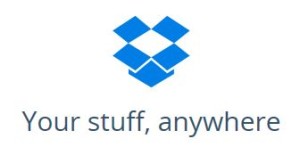We are getting a lot of questions lately about Freemium and whether it is a good idea for selling B2B digital content. Also, we find that often the term Freemium is being confused with Free Trial, i.e. giving someone a limited time to try a product or service for free, before charging. So let’s take a look at Freemium.
Freemium is a pricing strategy by which a product or service (typically a digital offering such as software, media, games or web services) is provided free of charge, but money (premium) is charged for advanced features, functionality, or virtual goods. (1, 2) Examples of Freemium include smartphone apps and high-profile names like Dropbox, Skype and Linkedin.
At its core, Freemium is an “introductory” pricing strategy. The core assumption for using a Freemium pricing strategy is that the user will start using the free version of the service but later, after extended use, will desire more functionality for which he is willing to pay.
According to Vineet Kumar, a professor at Harvard Business School, “Start-ups are attracted to the freemium model because it is “deceptively simple”—lure users with free services until they’re hooked, then charge for extras. The problem is, it’s not always obvious what features should be free and which should be paid.” Offering too many features in the free version risks “cannibalizing your paid customers,” while not offering enough might generate little interest all around.(3)
Besides the above issues, the main reason why Freemium is not a good strategy for most B2B companies is that the numbers don’t work: “Typically only 1% or 2% of users will upgrade to a paid product,” according to David Cohen, founder and CEO of TechStars, a start-up accelerator since 2007 with five U.S. locations. (3)
It is very hard to build a profitable business with those conversion rates. Besides, corporate customers usually have defined information and service needs that are willing to pay for.
In our experience, more effective B2B introductory strategies are “Free Trial,” and, to drive actual usage, “Negative Pricing.” The latter refers to a customer paying less, the more they use a product or service. In practice, a customer may be offered a 6 month or even a 1 year period during which it can reduce its subscription cost proportional to the usage of a product or service. This drives training initiatives and advocacy into the organization, and therefore is best used when widespread and quick adoption is critical to realizing value.
We only scratched the surface here, so please call us at 203-514-0515 if you would like to discuss how to gain traction with your new digital product or service.
—————————————–
(1) JLM de la Iglesia, JEL Gayo, “Doing business by selling free services”. Web 2.0: The Business Model, 2008. Springer
(2) Tom Hayes, “Jump Point: How Network Culture is Revolutionizing Business”. 2008.
(3) The Wall Street Journal, “When Freemium Fails” by Sarah E. Needleman and Angus Loten, Aug. 22, 2012 6:43 p.m. ET
